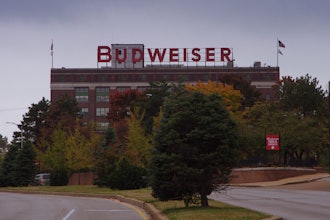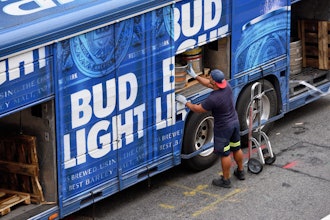
Embracing sustainability is a smart business move. Especially in food production, where the effects of waste, energy consumption and resources ripple out to consumers in mainstream society, influencing their decision making process.
For Gen Z especially, environmental stewardship is especially prevalent. With Millennials now making up one-fourth of the planet’s population, their spending power will have a marked impact on the future consumer landscape. Characteristically, Millennials value convenience. Yet, they also want to be more informed about business practices, with 81 percent also wanting to know the backstory of where their food has come from[2].
Unlocking this Millennial mindset could be the key to manufacturers achieving circular infrastructure success, believes food inspection specialist Fortress Technology. As a Millennial business itself - Fortress was incorporated in 1996 - the company believes that choosing more sustainable production methods requires a multi-pronged approach. Extending the lifespan of equipment and optimizing return on Iivestment is one way keep your sustainability stakeholders happy.
For food manufacturers, demonstrating, let alone quantifying sustainability is often the greatest challenge. Even the word itself means different things to different generations, from environmentally friendly to organic, ethical to transparency. Another challenge is the split about what constitutes sustainability between consumers and industry. This is in part due to the fact there are so many aspects to the agenda – from being eco-friendlier by reducing energy consumption and your carbon footprint, to tackling the volume of food that ends up in landfill.
The Legacy Perspective
Most electronics and industrial machines today are not designed to last forever, let alone be upgradeable. Components are glued to motherboards. Smartphones are sealed. Digital control panels are discarded when the pixel dies. The waste generated is enormous, and the ecological footprint even bigger. If thrown into a landfill, hazardous substances can leak out causing soil and water contamination. This can be harmful to wildlife and to human health.
It’s estimated that the United States produces as much as 7.6 billion tons of industrial waste annually. Disposing of out-moded industrial food production assets can be especially complex. It usually requires the support of specialist organizations. Because most metal detectors have coils embedded within them, this makes it even harder to reclaim and recycle components when a machine enters the waste stream.
Reassuringly, with the right maintenance, a well-built food metal detector can run for 20+ years. Machinery innovation isn’t going to slow. There’s always going to be faster, more efficient and cutting edge technological solutions coming to market. But that doesn’t mean prematurely discarding perfectly functional kit/machinery because it doesn’t comply with the latest retail inspection standards or regulations.
For its part, Fortress technology parts have been developed with backward compatibility in mind, meaning they can be replaced with the latest revision. Last year, one of the first machines ever sold by the company was upgraded from an analog metal detector with no digital controls to the current Stealth hardware platform.
International initiatives like SAVE FOOD have helped to firmly place the issue of food loss on the political agenda. Across the entire value chain, there has been a concerted effort to address people’s throwaway mindset. Roughly one-third of the food produced in the world annually for human consumption— approximately 1.6 billion tons — gets lost or wasted. That’s enough to meet future global food needs. Arguably, food waste is where the most obvious sustainability agenda lies.
The challenge right now is that production processes typically focus more on optimizing equipment availability and line speeds as opposed to implementing KPIs to measure food waste. Excessive levels of false rejects are one area where food manufacturers can benefit from the most recent metal detector innovations.
Fortress estimates that false product rejects may add up to over $14,000 for each food line, depending on the scale of the problem. Critically, false rejects don’t just impact the physical waste where good food is discarded. Lower factory yield can undermine the cost-effectiveness of an entire operation, while repeated stoppages and trouble-shooting will incur unnecessary cost.
Fortress President Steve Gidman Fortress president Steve Gidman offers these closing thoughts: “Sustainability cannot be considered on a single metric alone. However, there's much to be said, from many environmental vantage points, about postponing replacement purchases of anything, not just metal detectors.
"If food production facilities can keep machinery out of the waste stream and delay the additional environmental costs of making something new, that’s responsible waste stewardship. It’s also a big tick for every manufacturer who is striving to achieve their sustainability goals.”
[1] U.S. Census Bureau’s International Database
[2] https://www.nielsen.com/content/dam/corporate/us/en/images/news-trends/2016-newswire/millenial-mindset-infographic.jpg






















